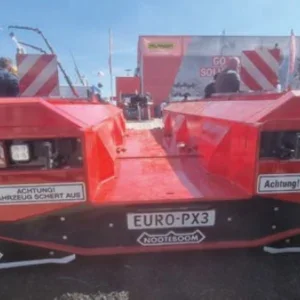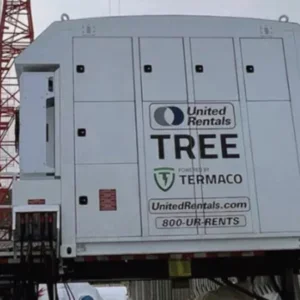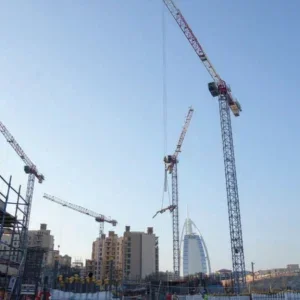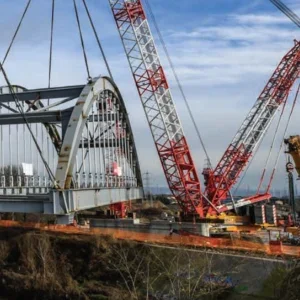I don’t plan to make a habit of using this page as a used equipment trading forum, but this month I am making an exception. I have been approached by the Dutch Steam Association (Stoom Stichting Nederland, or SSN) to help try to find a new home for a little piece of industrial history. A worthy cause, I feel. The SSN, founded in 1976 to preserve and refurbish steam locomotives and carriages has an old steam crane for which it is trying to find a new home.
The crane, type 1AA1, was built in 1943 by the Industrial Brown Hoist Corporation of Bay, Michigan for the US army. Similar cranes were used during the Normandy landings. In 1946 the crane, along with three similar ones, was moved to the Piet Smit shipyard in the Netherlands, where it worked until 1977. The other steam cranes were converted to diesel power, but this one (number 23 in the yard) always kept its steam engine. In 1978 it was handed over to the SSN, which made good use of its 20 ton lifting capacity, but today it is just a curiosity that does not fit with the SSN’s collection.
I am told that the machine still works. It is 8.95m long over the buffers, drivewheel diameter is 830mm, total weight is 81t and maximum axle load is 30t.
SSN is not looking for payment – just a good home for the machine. If there is a museum out there, or perhaps another enthusiasts’ society, that can provide a home for this crane, they can contact Sander Husen (s.husen@hccnet.nl). Sander can answer any technical queries.
Further details of the SSN can be found at www.stoomstichting.nl and a short history of the manufacturer, Industrial Brownhoist, is at www.bay-journal.com/bay/1he/bus/industrialworks.
Better fail-safe than sorry
The great Japanese RT product recall will doubtless provide succour to those luddites who, throughout the history of modern crane manufacturing, have resisted the rise of gadgetry and gimmicks from anti-two block devices and load moment indicators to outrigger sensors that automatically detect the settings of the outriggers and set the chart accordingly, without the need for the operator to input any data. Arguably starting with the pioneering Kobelco RK 70, the Japanese have provided operator assistance devices that many in the western world have considered downright dangerous.
Anything that makes the operator’s job easier, they say, makes the lifting operation more dangerous because the operator no longer has to pay such close attention to what he or she is doing. I have some sympathy with this view – roads that appear potentially dangerous have fewer traffic accidents on them because drivers know they must remain alert; it is the long, boring, open stretches of road that lead drivers to fall asleep at the wheel that are the real hazards.
However, when it comes to operator assistance devices, I’ll take whatever’s going, please, and then some. I’d even have a cappuccino machine and a Mr Whippy ice cream dispenser in the cab, if offered. The mistake the Japanese manufacturers made – and corrected eventually – was making it possible to activate the reverse steering mode on their cranes accidentally, with occasionally tragic results.
However, I do not accept this as an argument against the provision of sophisticated features. Rather, it is a lesson, well learned, of the importance of fail-safe mechanisms.
People power that lies behind the glory
Note to Art Innamorato, CEO, Maxim Crane Works: Congratulations! You’ve saved the business from collapse, but here the real hard work begins. And you cannot do it alone.
The crane rental business is more about people than machines. Since your chief operating officer, Al Bove, departed the business on 1 October, you have lost far too many key people, including Bill Thompson in California, and Dennis Bates, manager of your tower crane operations.
You need people like these if the business is to be revived. ‘Whatever it takes’ is your company’s great slogan. Well, now is the time to do whatever it takes to get good, well-know industry leaders back into the business, and quickly.






